Superstition Room
Welcome to Psychic Library’s Superstition Room, a place to learn about many superstitions and their origins. Superstitions date back to early man’s attempt to explain Nature and his own existence. There was a deep belief that animals, nature and objects held a connection to spirits and the spirit world. In order to have a feeling of appeasing these forces, different behaviors or customs arose that would dictate a favorable fate and good fortune. Many superstitions have come from mythology, where omens were common.
Superstitions live on because they have been passed on from generation to generation. Even today, where direct evidence and facts outweigh superstitious beliefs, there are probably very few people who can categorically deny that they do not at least secretly harbor a slight belief in one or two superstitions.
![]()
THE NUMBER 13
 There is a term for a fear of the number 13; triskaidekaphobia, of Greek origin. The term for a fear of Friday the 13th is paraskevidekatriaphobia.
There is a term for a fear of the number 13; triskaidekaphobia, of Greek origin. The term for a fear of Friday the 13th is paraskevidekatriaphobia.
Across many cultures, the belief that the number 13 is evil and brings bad luck is so strong that many hotels, office and apartment buildings do not have or recognize a 13th floor, airports usually do not have a 13th gate and many people stay home on Friday the 13th.
The Chinese and ancient Egyptians believed the number 13 brings good fortune. The Egyptians believed in 12 stages in life toward spiritual enlightenment. The 13th stage was the eternal afterlife. In this sense, death was not a place of fear, but a place of high regard for the afterlife.
One theory about why this negative belief about the number 13 exists is that Judas, who betrayed Jesus, was the 13th person to be seated at the Last Supper.
In 1881, a group of New Yorkers set out to debunk this and all other superstitions and formed a group called the Thirteen Club. Its first meeting took place on Friday the 13th at 8:13 pm and 13 people sat down to dinner in room number 13. To get into the room each guest walked under a ladder and sat down around piles of spilled salt. Needless to say, all of the guests survived. For the next 40 years, Thirteen Clubs cropped up all over the U.S., but then faded from popularity.
THE NUMBER 7
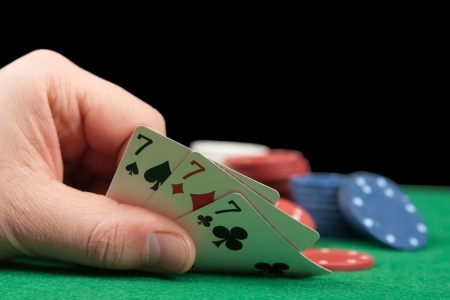 Numerous references to the number 7 are found throughout history in religions, cultures and ancient civilizations. The number seven is most often associated with good luck. It is believed that the importance of the number seven began in ancient times. During that time, before the invention of the telescope, only seven planets were visible in the skies, the sun, the moon, Mercury, Venus, Mars, Saturn and Jupiter. This may explain why many ancient cultures adopted seven gods or deities.
Numerous references to the number 7 are found throughout history in religions, cultures and ancient civilizations. The number seven is most often associated with good luck. It is believed that the importance of the number seven began in ancient times. During that time, before the invention of the telescope, only seven planets were visible in the skies, the sun, the moon, Mercury, Venus, Mars, Saturn and Jupiter. This may explain why many ancient cultures adopted seven gods or deities.
The ancient Greeks thought the number seven to be extremely lucky. Pythagoreans considered the number seven to be a perfect number. There were seven ancient Roman and Egyptian Gods. Hinduism recognizes seven major chakras (energy centers in the human body). The Arabs built seven holy temples. In Japanese tradition, there are seven lucky gods that bring good fortune. There is also a belief that seven ancient Buddhas existed.
References to the number seven appear many times in the Bible (Old Testament). For example, God created the world in six days and the seventh day was the Sabbath or day of rest; King Solomon?s temple took seven years to build; every seven years is considered a holy year in the Hebrew Torah; Israelites during the battle of Jericho were told that marching around the walls of the city seven times would ensure their victory and its walls would come tumbling down; the Kaballah seven-knot, red-string bracelet to protect from the evil eye and negative thoughts; and in Jewish tradition, the deceased are mourned for seven days, which is known as sitting shiva (shiva literally means seven). As far as the Christian Bible (New Testament), examples of the number seven are abundant: seven seals in Revelations; seven sacraments; seven stars; seven deadly sins; seven last plagues; and seven heavenly virtues.
Even to gamblers the number seven is lucky. Three sevens make a blackjack, a big payout on a slot machine and a winner in the game of craps. The opposite sides on dice add up to seven. On July 7, 2007, the casinos were full up, as hopefuls tried to beat the odds on this lucky date of 07/07/07.
The number seven has been, and still is, universal. Here are more some examples: seven wonders of the world, seven seas, seven continents, seven hills of Rome, seven notes in a musical scale, the seventh inning stretch at a baseball game, seven colors in a rainbow, seven spots on a ladybug (always a good-luck symbol), seven days of the week, the seven-year itch and Snow White?s seven dwarfs. Also, it is believed that the seventh child of a seventh child will be psychically gifted.
For the most part, the number seven is associated with good luck. However, in the Chinese culture it symbolizes death. Also, breaking a mirror is thought to bring seven years of bad luck. This superstition may have stemmed from the Romans who believed that people underwent a physical and spiritual regeneration every seven years and that the mirror was a reflection of the soul. Thus, when a mirror is broken, the person’s soul would have to wait seven more years for regeneration. However, given the examples listed here, it is almost a sure thing that the number seven is a lucky, protective and positive symbol for most people.
SPILLING SALT
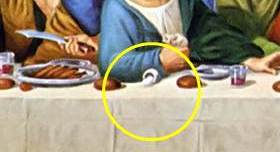 Historically, it has been believed that spilling salt will bring a person bad luck. More so than bringing bad luck, it is an invitation to let the devil in. Origins of this superstition may date back to ancient times, as salt was used in early rituals and practices. In many cultures it was believed to be a powerful magical substance.
Historically, it has been believed that spilling salt will bring a person bad luck. More so than bringing bad luck, it is an invitation to let the devil in. Origins of this superstition may date back to ancient times, as salt was used in early rituals and practices. In many cultures it was believed to be a powerful magical substance.
At one time salt was a very expensive trading commodity, and spilling it was considered wasteful and frowned upon. This could have brought fear to the person who spilled it. Also, there is a connection that spilled salt is unlucky because Judas is portrayed as the one spilling the salt in DaVinci’s painting of the “Last Supper.”
There is yet another Christian belief ascribed to this superstition. It is believed that good spirits exist on the right-hand side and that the devil is seated at the left-hand side of God. So, when we spill salt, it is important to throw the salt with our right hand over our left shoulder to keep the devil, evil and bad luck off of our backs and behind us.
BLACK CAT CROSSING YOUR PATH
 If a black cat crosses your path, bad luck will come to you, and it can also be an omen of death. In another version, it is believed that if a black cat walks toward you, it will bring you good luck and if it walks away from you, it takes good luck away.
If a black cat crosses your path, bad luck will come to you, and it can also be an omen of death. In another version, it is believed that if a black cat walks toward you, it will bring you good luck and if it walks away from you, it takes good luck away.
In ancient Egypt, all cats, including black ones, were highly regarded and well protected from death and injury. It is customary in England and Ireland that black cats bring good luck.
During the Middle Ages, black cats were seen as evil demons and companions to witches and that they should be destroyed. Because they were seen as demons, it was believed that a black cat crossing your path would block your connection to God and the entrance to heaven. The paranoia surrounding this superstition caused the destruction of a lot of black cats, as well as the killing or severe punishment of anyone who took care of them.
BROKEN MIRROR
 The superstition of bad luck surrounding breaking a mirror has existed long before metal or glass mirrors were actually invented. Before these types of mirrors were produced, reflections of one’s self were seen in rivers, ponds, pools or bowls. If the reflection looked distorted, it was believed that disaster would strike. In fact, an ancient Greek divination, called catoptromancy, used shallow bowls filled with water to tell a person’s future based on the reflection revealed. One’s reflection represented an individual’s soul. Distorting a mirror, glass or water-filled bowl damaged the reflection, and thus, the soul.
The superstition of bad luck surrounding breaking a mirror has existed long before metal or glass mirrors were actually invented. Before these types of mirrors were produced, reflections of one’s self were seen in rivers, ponds, pools or bowls. If the reflection looked distorted, it was believed that disaster would strike. In fact, an ancient Greek divination, called catoptromancy, used shallow bowls filled with water to tell a person’s future based on the reflection revealed. One’s reflection represented an individual’s soul. Distorting a mirror, glass or water-filled bowl damaged the reflection, and thus, the soul.
The ancient Greeks, Hebrews and Egyptians produced mirrors made out of silver, gold, brass or bronze, which were unbreakable. These early mirrors were considered extremely valuable and possessed mystical attributes.
Almost universally, this superstition includes that the bad luck would last for seven years. The origin of this belief stems from an early interpretation in Roman times that each person?s body undergoes a physical regeneration every seven years. A broken mirror signified a break in the person’s health and well-being, going back to the theory of the mirror being the reflection of the soul.
In 15th century Venice, Italy, when glass mirrors backed by silver coating were first produced, they were prohibitively expensive. Servants of the wealthy, who most often would be in the position of cleaning or moving a mirror, could never afford its replacement, if broken. The punishment or threat of breaking a mirror became that of having to serve for seven years as an indentured servant to the mirror’s owner.
During the mid-1600s, when England and France were finally able to manufacture mirrors inexpensively, the superstition about bad luck and broken mirrors was already solidified in the culture.
It is noted that one way to avoid the bad luck associated with breaking a mirror is to take the broken pieces and bury them underground and under the moonlight.
OPEN UMBRELLA
 It is still believed by some that opening an umbrella indoors will bring bad luck. The origins of this superstition are not totally agreed upon, but some say it can be traced back to the early Egyptians. Back then, umbrellas protected people (mostly nobility or religious leaders) from the heat of the sun, not from the rain and were thought to ward of spirits who might do them harm. To open one inside or even in the shade would offend the God of the Sun.
It is still believed by some that opening an umbrella indoors will bring bad luck. The origins of this superstition are not totally agreed upon, but some say it can be traced back to the early Egyptians. Back then, umbrellas protected people (mostly nobility or religious leaders) from the heat of the sun, not from the rain and were thought to ward of spirits who might do them harm. To open one inside or even in the shade would offend the God of the Sun.
It was also believed that the Egyptian goddess Nut (Nuit) enveloped the sky like a huge umbrella. The beautiful man-made umbrellas were fashioned with peacock feathers and papyrus and represented the goddess. Because of their religious significance, they were usually held only over the noble classes. The shadow that surrounded the person underneath the umbrella was considered sacred, and if someone other than the nobility stepped on this space, it was considered sacrilegious. Oddly enough, the Babylonians considered it an honor for anyone to step into the shadow of a king’s umbrella shade.
Others believe that the bad luck associated with opening an umbrella indoors came to be in 18th century London, the time when waterproof umbrellas with metal spokes were popularized. These umbrellas were awkward to open and were extremely large in size, which could cause injury to people or break objects if opened inside a house or in a small space. This could cause anger or arguments among family or friends, which was considered bad luck, or at least something to be avoided.
Another variation on the superstition is that if rain is predicted on a given day, take an umbrella with you and it will not rain. And if you leave the umbrella behind, it will definitely rain.
It has also been noted that bad luck does not occur if the umbrella has first been opened outdoors and then brought inside to dry. And that bad luck is associated with an umbrella if it is the color black, was given as a gift, has never been used outside in the rain, is opened on a ship, or is dropped on the floor.
WALKING UNDER A LADDER
 The superstition associated with walking under a ladder is that it will bring you bad luck. One origin of this superstition dates back to medieval times, in which the ladder symbolized the gallows ? a place where persons were hanged. So when someone walked under a ladder, it was believed that he would surely face his own death by hanging. And because people were hung at the top rungs of the ladder, it was thought that their spirits resided within the triangle that was formed by the leaning ladder, in other words, it formed a haunted area. Ladders were typically leaned up against the gallows and used to assist the person in charge of removing the dead bodies. By walking under the ladder during that time, it was assumed that a dead body could fall on you, causing injury or death.
The superstition associated with walking under a ladder is that it will bring you bad luck. One origin of this superstition dates back to medieval times, in which the ladder symbolized the gallows ? a place where persons were hanged. So when someone walked under a ladder, it was believed that he would surely face his own death by hanging. And because people were hung at the top rungs of the ladder, it was thought that their spirits resided within the triangle that was formed by the leaning ladder, in other words, it formed a haunted area. Ladders were typically leaned up against the gallows and used to assist the person in charge of removing the dead bodies. By walking under the ladder during that time, it was assumed that a dead body could fall on you, causing injury or death.
Another origin of this superstition dates back to ancient Egypt. The Egyptians believed strongly in the power of the pyramids. Even a ladder leaning against a wall symbolized a pyramid because of its triangular shape. If someone walked under it, they believed that the power of the sacred pyramid was broken.
Yet another early belief about ladders was that when leaned triangularly against a wall, it signified the Holy Trinity, the Father (God), the Son (Jesus) and the Holy Ghost (the spirit of Jesus). The action of walking under the ladder was considered blasphemy and a desecration of God. Additionally, it would invite the devil in.
There are ways to undo the seemingly disastrous consequences. By walking back through the ladder, you can undo the harm and secure a second chance of better luck. Also, crossing your fingers until you see a dog can fix the situation.
The best belief is common sense. Jarring a ladder in any way might cause you to get hit by a falling object, or cause someone already on it to fall off. It is best to walk around it to ensure a better day. If you choose to walk under one, use the crossing fingers method stated above.
STEP ON A CRACK
 Misfortune and bad luck are thought to be the result of stepping on cracks in the pavement. It is usually associated with the saying: Step on a crack and break your mother’s back.
Misfortune and bad luck are thought to be the result of stepping on cracks in the pavement. It is usually associated with the saying: Step on a crack and break your mother’s back.
However, this superstition originated back in the late 19th and early 20th century, unfortunately when racism was prevalent in society. The original unkind verse is believed to be either Step on a crack and your mother’s baby will be black or Step on a crack and your mother will turn black. Due to the fact that inter-racial marriages were frowned upon by some, it was also common then to say that stepping on the pavement lines meant you would marry a black person and have a black baby.
In the mid-20th century, it was common to tell children that if they stepped on any cracks in the pavement they would be eaten for lunch by bears waiting for them around the corner.
Another belief surrounding this superstition is that the number of cracks stepped on indicates the number of bones your mother would break. Also, it foretold the amount of china dishes that you would break.
There is also a belief that the cracks in the ground or pavement lead directly to the underworld. Thus by stepping on them, the evil demons that dwell there would be released and bring bad luck.
KNOCK ON WOOD
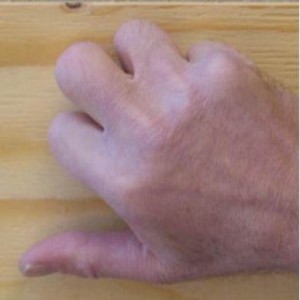 To knock on wood or to touch wood is done to ward off unlucky consequences, get rid of evil spirits, to undo something that is said that could possibly tempt fate or to bring good luck. One can also knock on wood three times after talking about something lucky or serendipitous, in order to ward off the evil spirits who might purposely ruin it.
To knock on wood or to touch wood is done to ward off unlucky consequences, get rid of evil spirits, to undo something that is said that could possibly tempt fate or to bring good luck. One can also knock on wood three times after talking about something lucky or serendipitous, in order to ward off the evil spirits who might purposely ruin it.
It is believed by some that the superstition dates back to ancient pagan times and the belief that spirits or deities lived in trees, and knocking on the tree or touching it would acknowledge them and call upon them for protection from misfortune. It was also seen as a thank-you gesture to the spirits or gods for bringing good luck and blessings.
Irish folklore states that the act of touching wood sends a thank you to leprechauns for some good luck. The Greeks worshiped the Oak tree because it was sacred to Zeus and the Celts believed in spirits living in trees. Touching those trees brought good luck.
As many early pagan beliefs became part of Christian beliefs, this superstition may have been one of them. Some people believed that knocking on wood was associated with the Cross. A Jewish version of the superstition traces back to the Spanish Inquisition of the 15th century. The Jews fled to wooden-built synagogues for refuge and came up with a specific knock code to be let in. These refuges saved many lives, and it then became common to knock on wood to bring good luck.
By the 1800s, even children’s games included rhymes about knocking on wood for luck. By the 1900s, the Americans and British were doing the same.
Today, it is acceptable to knock on wood-like surfaces for good luck. There are times when people even knock on their own heads for luck when there is no wood around.
SEEING A HEARSE
 The hearse is a most notorious icon of death and mourning. Numerous superstitions, gestures and beliefs are connected to this vehicle. Just the mere sight of a hearse can stir up many emotions about our own mortality.
The hearse is a most notorious icon of death and mourning. Numerous superstitions, gestures and beliefs are connected to this vehicle. Just the mere sight of a hearse can stir up many emotions about our own mortality.
Since the time of horse drawn hearses, a common belief was that if you saw a hearse, you would be the next to die. To avoid such a horrible curse, in Victorian times, it was believed that holding a button could ward off this demise. Others held a button until they saw a bird. Some people would go as far as to hold their breath, close their eyes and put their feet up in the air.
Another old belief is that a hearse drawn by two horses (especially white ones) signified a death would happen in the neighborhood in the very near future.
One of the more interesting traditions about hearses passing by is taken from Japanese culture. Hiding one’s thumb in a fist while the hearse passed was done to protect the parents from an early death. (The thumb is a representation of the parent finger, called “oya yubi” in Japanese.)
Another superstition is based on which direction you see the hearse moving. If the hearse is moving toward you and empty, it is considered good luck in some parts of the United States. In other areas of the U.S., it could bring on three days of good or bad luck. On the other hand, if a hearse is empty and moving away from you, you are close to death.
Some people believe that if they see their reflection in the window of a hearse, it is a bad sign. No matter what, a hearse is the sign of imminent death. Most people have some type of superstitions about seeing one, and most of us will be unable to avoid being the passenger in one way or another. And by the way, you don’t ever want to be the first person to drive a brand new hearse it is definitely bad luck.
SNEEZING
 The development of sneezing superstitions came about due to early man’s belief that his breath was representative of his own soul. Breathing in was breathing in life. Sneezing was a swift release of that essence or soul. If the soul left the body through a sneeze, it was presumed the individual would die without his soul. The mysteries and superstitions surrounding sneezing most probably continued on from this point.
The development of sneezing superstitions came about due to early man’s belief that his breath was representative of his own soul. Breathing in was breathing in life. Sneezing was a swift release of that essence or soul. If the soul left the body through a sneeze, it was presumed the individual would die without his soul. The mysteries and superstitions surrounding sneezing most probably continued on from this point.
Although you may think it is merely the polite thing to do, blessing people after they sneeze is actually a very common superstition and is practiced all over the world. It is believed that saying “God Bless You” dates back to February 16, 590AD, when pope Gregory the Great decreed that prayers be said to fight against a deadly plague in Italy. This plague seemed to be fatal to those who sneezed. So it followed that the sneeze represented certain illness and using “God Bless You” would protect people from the effects of the disease.
Saying “God Bless You”, is also believed to date back to 1665, when the black plague took over Europe. Violent sneezing was noted to be one of the end-stage symptoms of it before death. Thus, the pope made it a law that anyone who sneezed must be blessed, as the individual’s death was imminent. During that same era, everyone was mandated to cover their mouths with their hand or a cloth, so as not to further spread the disease.
There are other superstitions surrounding sneezing. When someone sneezed, it was either a sign of good fortune or an omen of bad luck. This dates back to the early Greeks, Romans and Egyptians. They believed that a sneeze was their own personal prophet, forewarning them of danger and forecasting future good and evil. Additionally, one would be congratulated upon sneezing because the evil spirits were freed from embodiment. It was also believed at that time that a sneeze during a conversation revealed the truth of a statement. Even today, you may hear somebody say, I sneezed on the truth.
In 17th century England, if a sneeze was heard, it was customary for all who were nearby to remove their hats, curtsy or bow and wish ?God Bless You.? As time went on, in the 1800?s in England, a rhyme was penned that described the out comes of sneezing on the various days in the week:
Sneeze on Monday, sneeze for danger.
Sneeze on Tuesday, kiss a stranger.
Sneeze on Wednesday, sneeze for a letter.
Sneeze on Thursday, something better.
Sneeze on Friday, sneeze for woe.
Sneeze on Saturday, a journey to go.
Sneeze on Sunday, your safety seek for Satan will have you for the rest of the week!
Some other superstitions with respect to sneezing are commonly seen throughout the literature. These include the following. It is good luck to sneeze between noon and midnight. It is bad luck to sneeze while getting dressed in the morning because bad luck will be with you during the day. It is a good omen for the whole family if the family cat sneezes. It is also good luck if two people sneeze at the same time.
It is bad luck to turn your head to the left while sneezing, but good luck if you turn to the right. It is also bad luck to sneeze one or three times. However, sneeze twice and it is an omen of good luck. In Japan, sneezing once is that someone is speaking kindly about you, twice is that someone is not speaking highly of you and three times is that someone is speaking disparagingly about you and four times is the sign of a cold.
Physiologically speaking, a sneeze is a reaction to irritating foreign particles, allergies, illness or a cold. Another known fact is that sudden exposure to bright light can bring on a sneeze. Overall, it is one of the body’s reflexive responses. Whether or not a sneeze has superstitious meaning is up to you.
CROSSING FINGERS
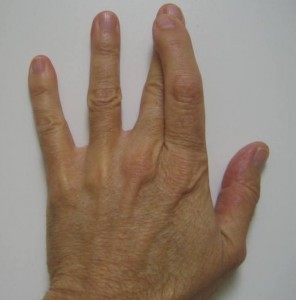 Crossing two fingers (the middle and index finger) is a very common superstition. It is mainly done to ensure good luck and prosperity or to give courage and support to yourself or another individual. For triple good luck some people cross not only their fingers, but their arms and legs at the same time.
Crossing two fingers (the middle and index finger) is a very common superstition. It is mainly done to ensure good luck and prosperity or to give courage and support to yourself or another individual. For triple good luck some people cross not only their fingers, but their arms and legs at the same time.
Some theories indicate that the origin of crossing the fingers dates as far back as the fourteenth century. In the pre-Christian era, crosses (for example, the Solar Cross, although there were many other variations of crosses at that time) symbolized power and unity, and the middle of the cross represented all that was good. People made wishes on the mid-point of the cross to ward off evil so that nothing would get in the way of the wish they wanted to fulfill.
That tradition evolved into crossing fingers between two people. One person would make a wish, the other person would help solidify the wish by putting his index finger onto the other person’s index finger, making the sign of the cross. Later it evolved into a single gesture a person would cross his own two fingers for his own good luck or someone else’s.
It is also possible that during the Hundred Years War, between France and England, before an archer would draw back his bow, he would cross the same two fingers that he would use on the bow to pray for good luck.
Before Christianity was legalized, making the sign of the cross to another person was also used as a sign between two Christians to identify each other, not unlike secret Fraternity handshakes of today. They may have also used both hands to form the sign of the fish, which also symbolized Christianity.
Today, crossing your fingers for luck is universal to many cultures and not just to Christianity. However, sometimes people cross their two fingers behind their backs to absolve themselves when they tell a lie and to ask God for forgiveness at the same time. Also the crossing of the fingers has a part to play in the walking under a ladder superstition. It is believed that if you accidentally walk under a ladder, must keep your fingers crossed to ward off any evil coming your way.
HORSESHOE
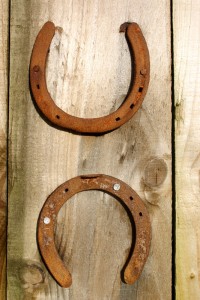 The superstition associated with the horseshoe is one of good luck and good fortune. It is believed that the good luck powers of the horseshoe date back to the story of a blacksmith named Dunstan and a man he believed was the devil. It is said that a man came to Dunstan and requested that he put horseshoes on his feet (hoofs). Dunstan recognized this man as the devil and nailed a horseshoe to the devil’s hoof. Seeing that the devil was in great pain, it is said that he chained him while he was in agony and only released him after the devil promised never to enter a place that had a horseshoe hung over the door. Dunstan eventually became the Archbishop of Canterbury in 959 AD and is known as Saint Dunstan.
The superstition associated with the horseshoe is one of good luck and good fortune. It is believed that the good luck powers of the horseshoe date back to the story of a blacksmith named Dunstan and a man he believed was the devil. It is said that a man came to Dunstan and requested that he put horseshoes on his feet (hoofs). Dunstan recognized this man as the devil and nailed a horseshoe to the devil’s hoof. Seeing that the devil was in great pain, it is said that he chained him while he was in agony and only released him after the devil promised never to enter a place that had a horseshoe hung over the door. Dunstan eventually became the Archbishop of Canterbury in 959 AD and is known as Saint Dunstan.
The way the horseshoe is hung and displayed varies. Some regions of the world believe that hanging the horseshoe in an upward position (U) holds in all the good luck and the powers it brings. For them, hanging the horseshoe upside down meant that its powers would fall away and dissipate. However, there are others who believe that hanging it in a downward position allows all of the good luck, protective powers and good fortune to shower upon you and surround the home. If you are doubly superstitious, you might want to hang one in each position. The choice is yours.
Another belief exists that the horseshoe, because of its crescent shape, has the ability to ward off the evil eye. In ancient Europe and prior to the Chaldeans, this crescent shape represented the various moon goddesses, which were signs of protection, good luck, fertility and could protect against a curse from the evil eye.
From early times to today people still wear horseshoe charms and amulets to bring good luck. Horseshoes were originally held in place on the horse using seven iron nails, as seven was considered a very lucky number. That is why some horseshoes and/or charms are made with seven nail holes in them. It was also believed that hanging a horseshoe over one’s bed could prevent nightmares. It became a common practice to hang a horseshoe outside of the home, barn or store to ward off evil and bring good luck. The horseshoe was also used by sailors who nailed them to the foremasts of their ships to ward off evil spirits and entities from harming their ships, crew or preventing them from arriving at their destination safely.
During the middle ages, for some reason it was believed that witches had a fear of horses, especially of their shoes, which were made from iron. Because iron could withstand fire, it was also believed that it could ward off all evil spirits. It was believed that a witch would never enter a home with a horseshoe nailed to or over the door. Suspected witches who were tried and not burned at the stake, but buried upon their deaths, had horseshoes nailed to their coffins to prevent them from returning to life or resurrecting again as witches.
FOUR-LEAF CLOVER
 The four-leaf clover, or shamrock, is thought of as a good luck charm in part because of its rarity in nature. It is estimated that the chances of finding a four-leaf clover are one in 10,000. The origin of the superstition dates back as far as the biblical story of Adam and Eve. It is believed that when Eve was cast out of the Garden of Eden, she took a four-leaf clover with her to remind her of the lushness of paradise. Since then, it has become a symbol of good luck and good fortune.
The four-leaf clover, or shamrock, is thought of as a good luck charm in part because of its rarity in nature. It is estimated that the chances of finding a four-leaf clover are one in 10,000. The origin of the superstition dates back as far as the biblical story of Adam and Eve. It is believed that when Eve was cast out of the Garden of Eden, she took a four-leaf clover with her to remind her of the lushness of paradise. Since then, it has become a symbol of good luck and good fortune.
According to Irish beliefs, the superstition stems from Druid priests who used the shamrock for healing the sick, in worship rituals and to ward off evil. Prior to this, St. Patrick had found the three-leaf clover to be an extraordinary plant. In ancient Egypt, when a couple got married it was traditional to give them a four-leaf clover which was a blessing of their union and a representation of their undying love for one another.
Some of the beliefs surrounding the power of the four-leaf clover include the following:
1. Each of the four leaves on this lucky charm has a specific meaning; faith, hope, love and luck.
2. Both children and adults would hang the four-leaf clover at home to ward off evil, witchcraft and bad omens.
3. A person who finds a four-leaf clover will meet a future lover on that same day. Some people even go so far as to put the four-leaf clover in their shoe.
4. Anyone who possesses a four-leaf clover will have good fortune in any ventures they attempt.
5. The four-leaf clover is a charm that protects against evil.
6. Anyone wearing a four-leaf clover will be able to see fairies.
7. One belief states that you will only have good luck if the four-leaf clover is kept out of sight and never passed to someone else. Another one states that if you give the four-leaf clover to someone else, your luck will double.
So, always be on the lookout for a four-leaf clover because you can never have enough good luck!
PENNY
 Finding a penny is commonly considered good luck. Remember the rhyme: Find a penny pick it up; all day long you’ll have good luck. The origins of this superstition may stem from ancient times when metals were believed to offer protection from evil and harmful spirits to those who possessed them. When cultures began using coins as currency, obviously those who had more of them were considered wealthy. Thus, the accumulation of money translated into good fortune. Perhaps this fact contributed to the good luck association with finding a penny or any coin.
Finding a penny is commonly considered good luck. Remember the rhyme: Find a penny pick it up; all day long you’ll have good luck. The origins of this superstition may stem from ancient times when metals were believed to offer protection from evil and harmful spirits to those who possessed them. When cultures began using coins as currency, obviously those who had more of them were considered wealthy. Thus, the accumulation of money translated into good fortune. Perhaps this fact contributed to the good luck association with finding a penny or any coin.
Some people believe that different outcomes will occur if the penny is found either heads up or down. If the penny is heads up you may freely and joyfully pick it up, and experience good luck. If the penny faces tails up, you can pick it up and turn it over for the next person just do not take it with you because you will be bringing yourself bad luck. Some believe that the penny you pick up should be passed along to someone else the same day to ensure your own good luck.
Others believe the penny superstition may have evolved from a pagan ritual: See a pin and pick it up; all day long you’ll have good luck. This lucky pin would then used in a good luck incantation. Exactly when the change occurred to use the word penny in the rhyme is not known; but we do know that both a pin and a penny are metal, and that may be the common thread between the two.
Another ritual associated with the penny is that a bride should put a penny in her shoe to ensure a happy and prosperous marriage.
So what will you do the next time you find a penny?
